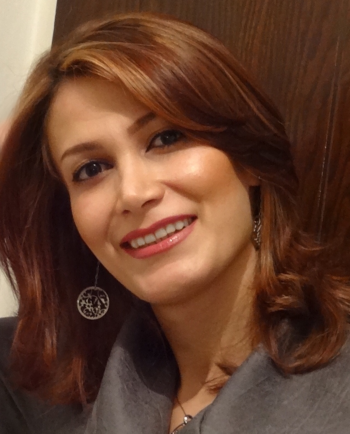a tissue engineering approach towards treatment of type 1 diabetes
Elahe Hadavi is a PhD Student in the Research Group Developmental BioEngineering (DBE). Her supervisor is professor Marcel Karperien from the Faculty of Science and Technology.
 Type 1 diabetes is an autoimmune disease in which the immune system destroys the insulin producing ß-cells of the pancreatic islets, which results in absolute insulin deficiency. Currently, intrahepatic islet transplantation is a promising treatment for type 1 diabetes, which may result in insulin independency of patients for several years. However, islet failure shortly after transplantation, insufficient insulin secretion and shortage of donors are major obstacles for this therapy. The main objective of the research described in this thesis was to improve the outcome of islet transplantation. By mimicking the islet’s native microenvironment and exploring various bioengineering strategies, we have developed devices that could be applied for successful transplantation of islets.
Type 1 diabetes is an autoimmune disease in which the immune system destroys the insulin producing ß-cells of the pancreatic islets, which results in absolute insulin deficiency. Currently, intrahepatic islet transplantation is a promising treatment for type 1 diabetes, which may result in insulin independency of patients for several years. However, islet failure shortly after transplantation, insufficient insulin secretion and shortage of donors are major obstacles for this therapy. The main objective of the research described in this thesis was to improve the outcome of islet transplantation. By mimicking the islet’s native microenvironment and exploring various bioengineering strategies, we have developed devices that could be applied for successful transplantation of islets.
To set the stages for this thesis, I) we have provided a comprehensive review on the biological, biochemical and biophysical characteristics of the islet microenvironment and the relation of these parameters with islets function and survival. II) We compared the physical and mechanical properties of biomaterials to be considered in the design of scaffolds. III) We explored the effect of microcontact printed extracelular matrix (ECM) molecules on the function and viability of INS-1E cells by providing a 3D biomimetic microenvironment. IV) We developed a microwell scaffold platform to not only act as a mechanical support and preserve the native morphology of islets, but also to maximize nutrient diffusion, while islet perfusion was kept at a minimum. Moreover, to mimic the islet’s native microenvironment, microwell scaffolds were coated with different ECM molecules solely and pairwise at various ratios. V) We fabricated porous microwell scaffolds to not only prohibit islet fusion but also stimulate islet revascularization, which are essential factors for islets function and survival post transplantation. We also evaluated the biocompatibility and potential of our fabricated porous microwell scaffolds to induce normoglycemia in rat models. VI) Finally, we focused on one of the most important obstacles in islet transplantation, which is insufficient vascularization. Therefore, we designed and compared two different in vitro growth factor releasing systems to induce vascularization.
Altogether, in this thesis we have developed microwell scaffolds and identified several aspects of the islet microenvironment to improve the outcome of islet transplantation to treat type 1 diabetes.

